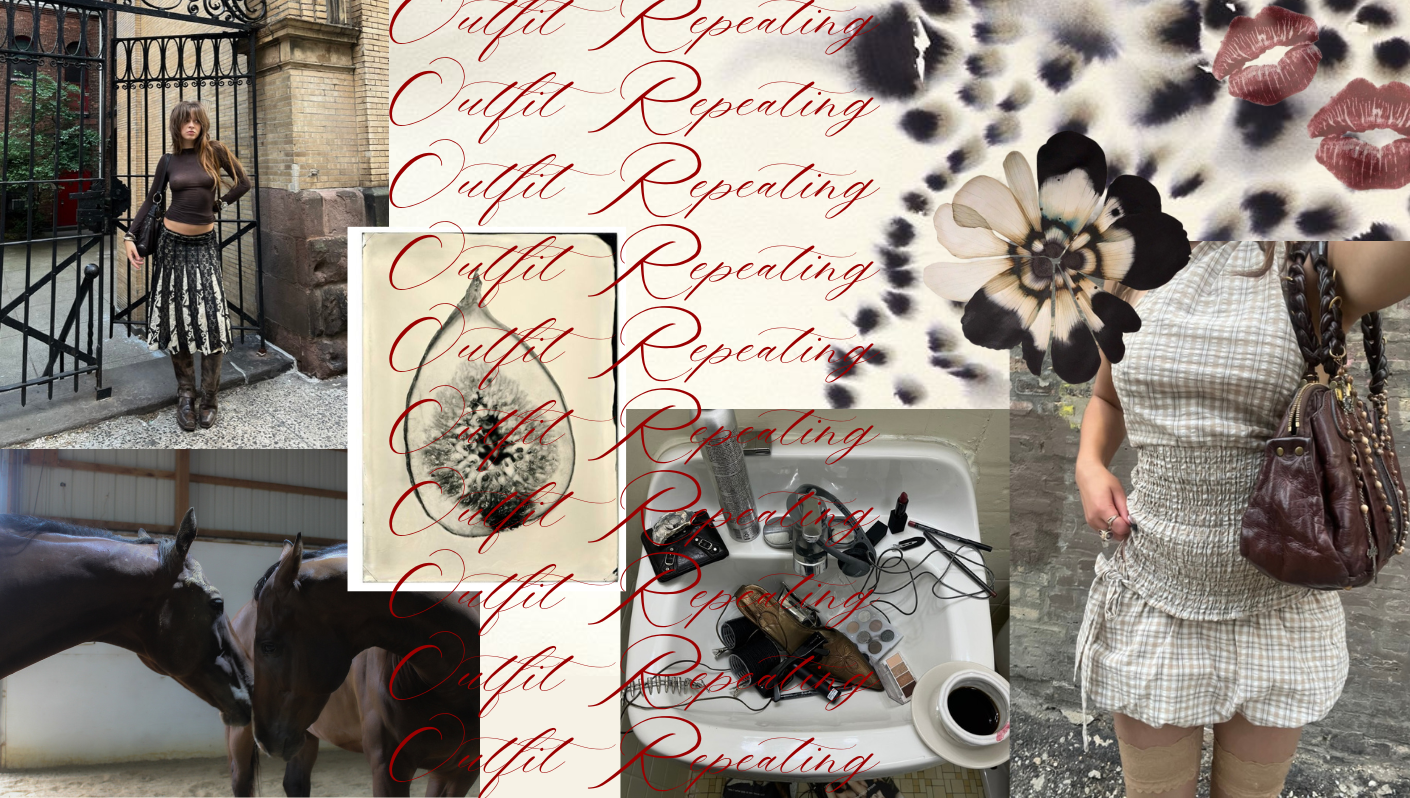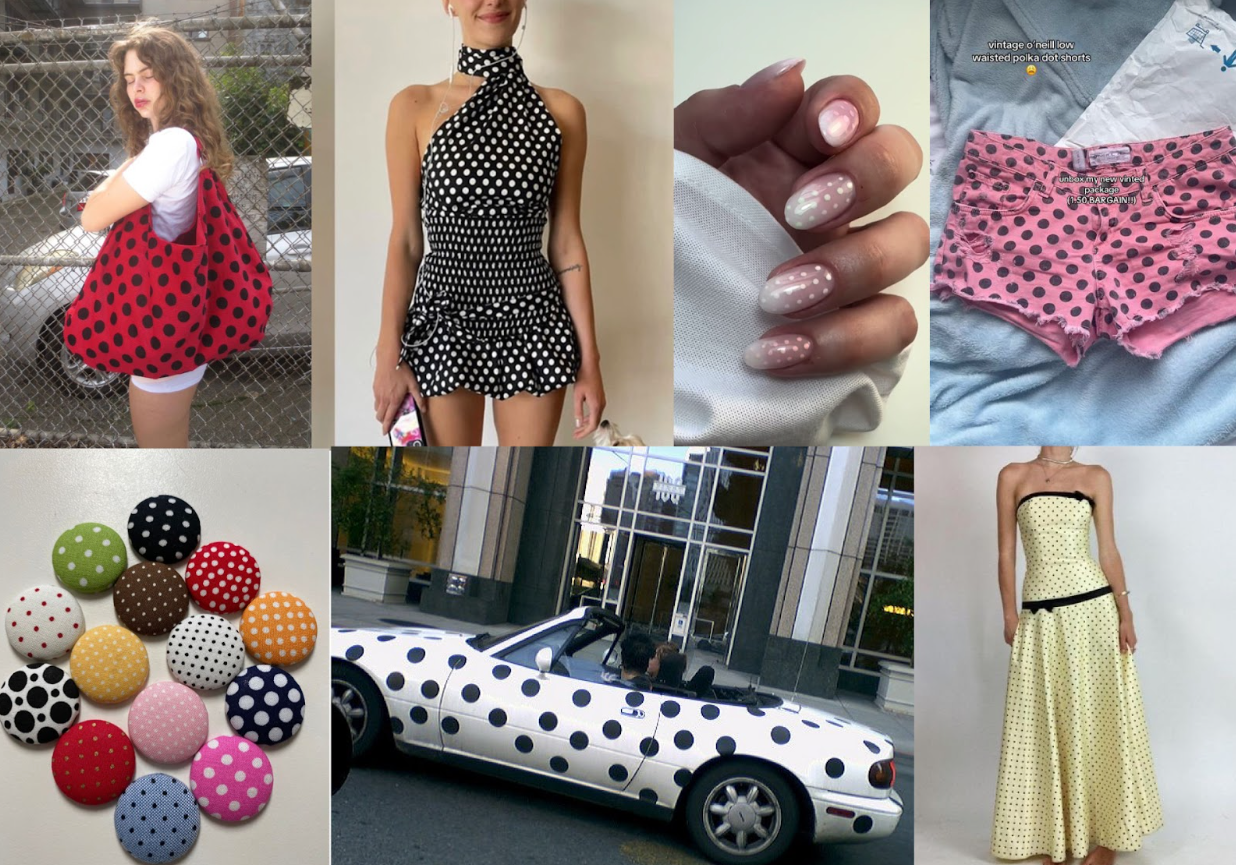The Art Of Outfit Repeating

By Iris Petrova...
Currently, I face the dilemma of fitting six months' worth of outfits into a single suitcase, a challenge that can be addressed through the practice of outfit repeating. The concept of outfit repeating is often overlooked in a society that prioritizes profit and overconsumption, but there's an undeniable power in simplifying your wardrobe.
Investing in pieces that align with your personality can lessen the mental load of decision fatigue and help you navigate your identity. Personal style should be a product of your life, passions, and daily tasks, not influenced by creators on social media who are being paid to sell you something that will disintegrate after two washes just because it’s trending.
One notable outfit repeater (and my guide for packing), Joan Didion, shared her packing list in her collection of essays, "The White Album." She writes, "This is a list which was taped inside my closet door in Hollywood during those years when I was reporting more or less steadily. The list enabled me to pack, without thinking, for any piece I was likely to do. Notice the deliberate anonymity of costume: in a skirt, a leotard, and stockings, I could pass on either side of the culture."
Her list comprises seven clothing items that can be easily paired to create several outfit combinations. This collection of timeless basics reflects her disciplined and minimalist ethos. As a reporter and a writer, her role was to observe others. Didion embodied the enigmatic, chic girl who was clear about her desires and was constantly on the go, and that's precisely what her fashion style reflects.
“The White Album” Joan Didion 1979
Similarly, Rick Owens is another workaholic who has also successfully used fashion as a tool to communicate his values. In a video tour of his home in Italy with Vogue, Owens reveals a closet similar to Didion's packing list: a stack of bottoms, tops, a jacket, and a few accessories. His signature monochromatic, alluring, and architectural style reveals his avant-garde perspective and passion for his craft. Both Didion and Owens are perceived as confident and secure because their fashion choices are informed by their distinctive personalities and values, not in an attempt to conform to societal norms.
Minimalism is not the only approach to outfit repeating; you can be both eclectic and mindful. Vivienne Westwood emphasized "buy less, choose well, make it last" in her designs and personal wardrobe. An advocate for art, nonconformity, and sustainable fashion, Westwood's wardrobe consisted of pieces that told her story.
Earlier this year, items from her personal collection were auctioned as an homage to her life's work. Each piece was bold, distinctive, and an authentic reflection of her identity. Interestingly, the collection and presentation of her closet was deliberately representative of her life, proving clothing to be more than an object but a vessel of self-expression.
Vivienne Westwood in a corset gown of taupe silk taffeta from the ‘Dressed to Scale’ Collection, Autumn-Winter 1998/99. Photo: Richard Young / Shutterstock
Vivienne Westwood wearing a cotton dress with printed ‘Propaganda’ modesty panel and apron with a blue and white striped blouse, from the ‘Propaganda’ Collection, Spring-Summer 2005/06. Photo: © Victor Virgile / Getty Images
By selecting several key items to rotate in your wardrobe, you set yourself up for stylistic choices that are unique to you; your story is your uniform.
Clothing is the one art form that everyone interacts with daily. Each item you choose to wear has an intention or a feeling behind it. It's easier to align your goals with your garments when you know you will wear them for years. Because these pieces will be worn several times, they become an extension of you; they carry the weight of your experiences and memories. Outfit repeating isn't just a lesson in personal style—it's also a small way to contribute to a more sustainable world, especially when your go-to pieces are second-hand or ethically made.
One of my favorite skirts, which will undoubtedly be a part of my travel wardrobe, has been with me since high school. It is a tiered Marithe Francois Girbaud skirt that I thrifted from Humana in Lithuania. I've worn this outfit numerous times: the skirt, a black top, frilled socks, and flats. Sharing clothes with my bestie adds another layer to the outfit-repeating concept—we often share the same clothes, reinforcing the idea of reimagining favorite pieces without buying anything new.
Overall, trends will always be a part of fashion, but by normalizing outfit repeating and making it a trend, we might inspire a generation of consumers who value their personal style and sustainability over constant consumption.
- Tags: fashion
7 comments
-
🏷 You got a transaction from our company. Next >> https://telegra.ph/Get-BTC-right-now-02-10?hs=bdee44f7c6605a386e116bd76ffd33cb& 🏷 on
x5o63w
-
nada on
this is a safe space for outfit repeaters
-
Steph on
Yes. Love it. Great article!
-
💻 + 0.75713400 BTC.NEXT - https://telegra.ph/Get-BTC-right-now-01-22?hs=bdee44f7c6605a386e116bd76ffd33cb& 💻 on
qvesve




nn1cwa